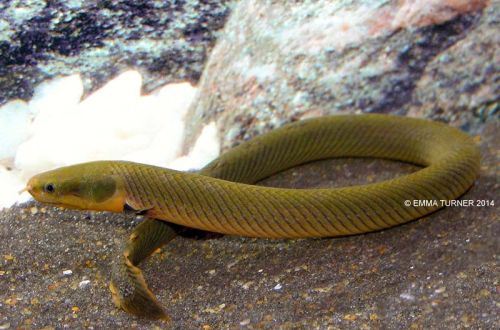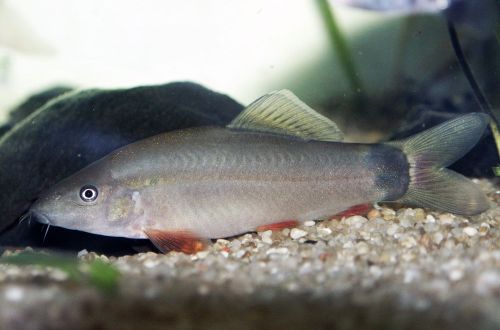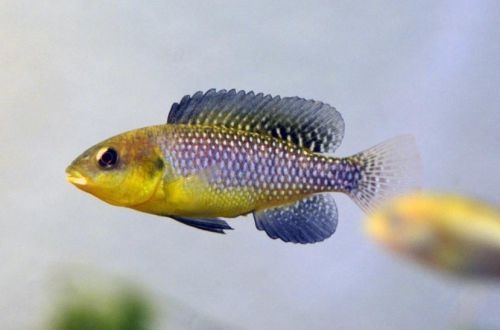
Kalamoicht
Kalamoicht or Snake Fish, scientific name Erpetoichthys calabaricus, belongs to the family Polypteridae (Multi-finned). It is a close relative of Polypterus. Both species are the last surviving representatives of ancient fish species that lived as far back as the dawn of the dinosaurs in the Triassic period. The earliest fossils date back 200 million years.

Contents
Habitat
The fish is native to West Africa. It is found on the territory of the Democratic Republic of the Congo, Angola, Nigeria, Cameroon, Equatorial Guinea and Benin. It mainly inhabits the Congo River Basin. It lives in shallow water among dense aquatic vegetation in places with a slow current or stagnant water.
Description
Adult individuals reach a length of more than 30 cm. Outwardly, it resembles a snake, thanks to its greatly elongated body and the ability to wriggle. The coloration is dark gray with a light belly. Despite its large eyes, Kalamoicht sees poorly and, being a nocturnal inhabitant, relies mainly on the sense of smell. Elongated nostril tubes are located on the head, with the help of which the fish finds prey in the dark and in conditions of poor visibility.
A feature of the species is the structure of the swim bladder. It is bifurcated, one of its parts is much larger and functions as an additional respiratory organ. Snake fish are able to stay out of water for some time under conditions of high humidity. This ability allows you to live in places very poor in dissolved oxygen.
It is worth noting that breathing atmospheric air is mandatory. Without access to the surface, Kalamoicht dies.
Behavior and Compatibility
Peaceful calm look. Compatible with many medium sized fish. At the same time, any fish that can fit in Kalamoichtu’s mouth is likely to be eaten. Gets along well with relatives.
As neighbors in the aquarium, you can consider Synodontis, large Kharacins, cichlids such as Severum and Angelfish.
Brief information:
- The volume of the aquarium – from 500 liters.
- Temperature – 23-30°C
- Value pH — 6.0–7.5
- Water hardness – 5–20 dGH
- Substrate type – soft, silty
- Lighting – subdued, dim
- Brackish water – no
- Water movement is weak
- The size of the fish is about 30 cm.
- Nutrition – live, fresh or frozen food
- Temperament – conditionally peaceful
- Content alone or in a group
- Life expectancy up to 15–20 years
Maintenance and care, arrangement of the aquarium
The optimal size of the aquarium for one adult starts from 500 liters. The design uses soft ground and many natural snags that act as shelters. Plants are another important element. It is necessary to provide for dense accumulations of vegetation, including floating ones.
The aquarium should be equipped with a lid, as the Snake Fish is prone to escaping from the tank.
High demands are also placed on the equipment. Do not use submersible equipment that has large holes where the fish could climb. For example, these can be water intake or outlet pipes of a filtration system, pumps, pumps and other pieces of equipment.
Hardy, successfully adapt to various conditions. They can live in a wide range of temperatures and pH and GH values. However, they are sensitive to sudden changes in the acidity and hardness of the water.
Food
In nature, they are nocturnal hunters. They feed on various invertebrates and small fish. In a home aquarium, live or frozen foods, such as bloodworms, earthworms, and shrimp, serve as the basis of the diet.
Breeding / breeding
There is no confirmed data on the successful breeding of Kalamoichts in home aquariums. Cases of spawning and the appearance of fry are not rare, but in an artificial environment it has not yet been possible to grow up to adults.
Fry look different than adults and it’s not just about size. Juveniles have external gills, like amphibians, which eventually disappear.
Sources: wikipedia.org, fishbase.org





